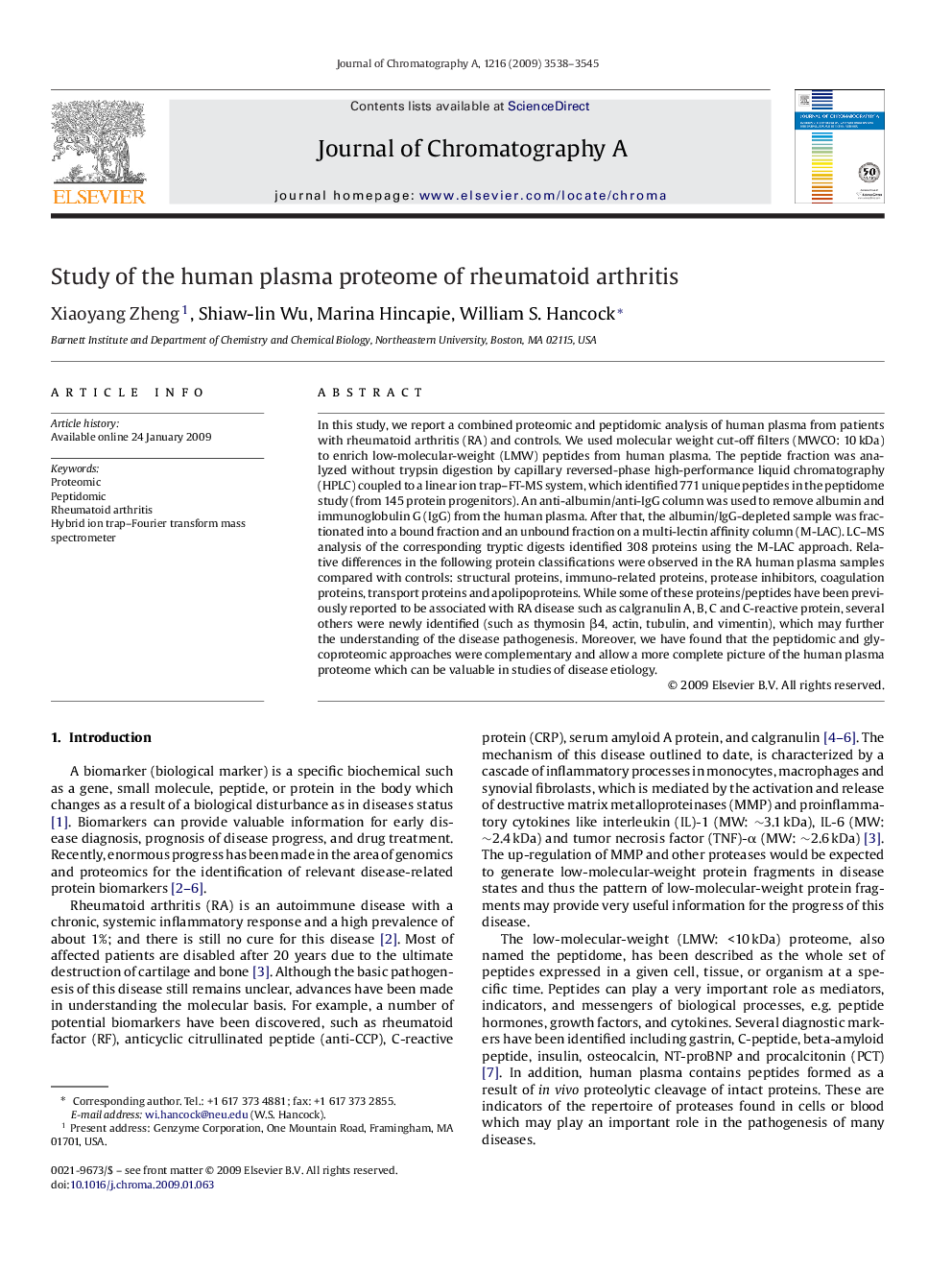| Article ID | Journal | Published Year | Pages | File Type |
|---|---|---|---|---|
| 1206913 | Journal of Chromatography A | 2009 | 8 Pages |
In this study, we report a combined proteomic and peptidomic analysis of human plasma from patients with rheumatoid arthritis (RA) and controls. We used molecular weight cut-off filters (MWCO: 10 kDa) to enrich low-molecular-weight (LMW) peptides from human plasma. The peptide fraction was analyzed without trypsin digestion by capillary reversed-phase high-performance liquid chromatography (HPLC) coupled to a linear ion trap–FT-MS system, which identified 771 unique peptides in the peptidome study (from 145 protein progenitors). An anti-albumin/anti-IgG column was used to remove albumin and immunoglobulin G (IgG) from the human plasma. After that, the albumin/IgG-depleted sample was fractionated into a bound fraction and an unbound fraction on a multi-lectin affinity column (M-LAC). LC–MS analysis of the corresponding tryptic digests identified 308 proteins using the M-LAC approach. Relative differences in the following protein classifications were observed in the RA human plasma samples compared with controls: structural proteins, immuno-related proteins, protease inhibitors, coagulation proteins, transport proteins and apolipoproteins. While some of these proteins/peptides have been previously reported to be associated with RA disease such as calgranulin A, B, C and C-reactive protein, several others were newly identified (such as thymosin β4, actin, tubulin, and vimentin), which may further the understanding of the disease pathogenesis. Moreover, we have found that the peptidomic and glycoproteomic approaches were complementary and allow a more complete picture of the human plasma proteome which can be valuable in studies of disease etiology.
